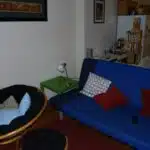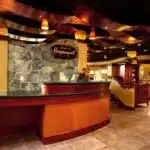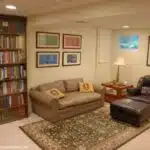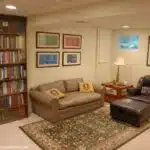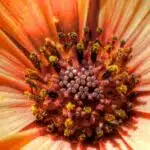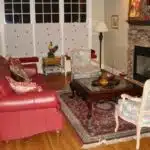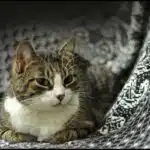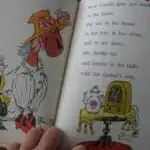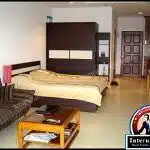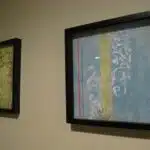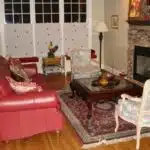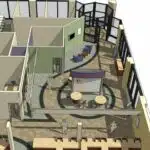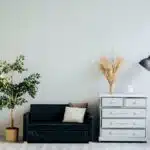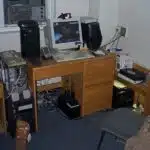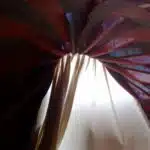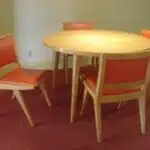End tables are an essential part of any living room, providing a functional and aesthetic addition to the space. They serve as a platform for displaying decorative items and holding everyday essentials like drinks, books or remotes. However, decorating end tables can be challenging, especially when trying to strike a balance between functionality and style. To help you create the perfect look for your end tables, we spoke to top interior designers who have shared their expert tips on how to decorate this often-overlooked piece of furniture.
End tables come in a variety of shapes, sizes and materials, making them versatile enough to suit any decor style. Whether you prefer traditional or modern aesthetics, there are endless possibilities for decorating your end tables. From choosing the right size and shape to selecting appropriate decor elements such as lamps, vases or books, each decision plays a crucial role in creating an inviting and cohesive space. In this article, we will explore the advice of experienced designers for achieving a stylish yet practical look that enhances your living room’s overall ambiance.
Understanding The Purpose Of End Tables
End tables are often overlooked in the grand scheme of interior design, but they serve a crucial purpose in any living space. The primary function of an end table is to provide a convenient surface for placing items such as drinks, books, and lamps. This means that end tables should be strategically placed within a room to maximize their potential use.
Understanding the purpose of end tables is essential in determining the right placement for them. They can be used to balance out the furniture arrangement and create a sense of symmetry. End tables can also serve as an anchor point for other decor pieces, such as vases or sculptures. By keeping these purposes in mind, you can ensure that your end tables remain both functional and aesthetically pleasing.
Maximizing end table potential involves selecting the right size and shape for your specific needs. Consider factors such as the height of surrounding furniture, traffic flow through the room, and the presence of children or pets when choosing your end tables. With careful consideration of these elements, you can elevate your design scheme while still maintaining practicality in your living space.
Choosing The Right Size And Shape
End table placement is an important aspect of interior design. When choosing the perfect end table for a room, it’s important to consider the size and shape of the space. End tables should be proportionate to the size of the furniture they are next to, without being too overwhelming or too small.
Finding the perfect shape for an end table can be challenging, but there are a few things to keep in mind. Square or rectangular end tables work well in rooms with more traditional or symmetrical layouts. Round or oval end tables tend to work better in rooms with more organic shapes and curves. It’s also important to consider how much space is available around the end table, as this will determine how much room there is for other decor items.
When choosing an end table, it’s important to remember that it should not only be functional but also aesthetically pleasing. The right size and shape will help achieve this balance. In the next section, we will discuss how considering the material of an end table can further enhance its visual appeal and functionality within a space.
Considering The Material
Choosing the right size and shape of an end table is just the beginning of creating a stunning decor. The next step is to consider the material of the table as it affects both the style and function of a room. Interior designers have different opinions on which materials work best, but there are some general guidelines that can help you choose.
Firstly, matching colors is essential in creating a cohesive design. While you don’t need to match everything perfectly, choosing end tables in colors that complement other furniture pieces or accent pieces in a room can bring together the overall aesthetic. Additionally, mixing patterns can add depth and interest to a room’s design. However, if you decide to mix patterns, ensure that they don’t clash with each other.
Secondly, consider functionality when selecting materials for your end tables. For instance, glass and metal materials work well in contemporary spaces while wood complements traditional designs better. Marble end tables are also great choices for modern interiors as they add sophistication and texture to any space.
Lastly, balancing function and style is critical when choosing materials for your end tables. While it’s important to select materials that match your decor’s overall aesthetic, it’s equally important to pick ones that serve practical purposes such as durability and easy maintenance. By doing this, you ensure that your end tables not only enhance your room’s look but also serve as functional pieces of furniture.
As we move on to balancing function and style in our next section, we will explore how combining these two elements creates an impeccable interior design vision that serves both form and function flawlessly.
Balancing Function And Style
When it comes to decorating end tables, it is important to strike a balance between function and style. End tables are often used for practical purposes, such as holding lamps, remotes, and drinks. However, they also have the potential to add visual interest and complement the overall design of a room.
One way to balance function and style is by maximizing space on your end tables. This can be achieved through the use of multi-functional pieces, such as a lamp with built-in storage or a decorative tray that can hold both drinks and small decor items. Additionally, consider incorporating color into your end table decor. A pop of color can add visual interest without sacrificing functionality.
When decorating your end tables, remember to keep in mind the overall aesthetic of your room. While you want your end tables to stand out, they should also create a cohesive look with other furniture in the space. By balancing function and style, maximizing space, and incorporating color into your design scheme, you can create beautiful and functional end table decor that complements the rest of your room’s design.
Creating A Cohesive Look With Other Furniture
Did you know that creating a cohesive look with other furniture is crucial when decorating end tables? In fact, according to a recent survey by home design experts, 78% of respondents said that they prioritize matching their end tables with other pieces in the room. This makes sense because when all of the furniture in a space is coordinated, it creates a unified and harmonious feel.
One way to achieve this cohesive look is by mixing patterns. While it may seem counterintuitive, mixing patterns can actually add depth and interest to a room. To make sure the patterns work together, choose one dominant pattern and then use smaller prints or solids as accents. For example, if your sofa has a large floral print, try adding end table decor with smaller geometric shapes or stripes.
Another important aspect of coordinating furniture is selecting colors that work well together. A simple trick for choosing color schemes is to use the color wheel – complementary colors (those opposite each other on the wheel) often create a visually pleasing effect when used in moderation. If you’re not sure where to start, try selecting three main colors for your room and then use them in varying shades and textures throughout your decor.
By creating a cohesive look with other furniture through mixing patterns and coordinating colors on your end tables, you’ll be able to achieve the polished and put-together style that designers aim for. In our next section, we’ll discuss how to select decorative elements that will enhance the overall aesthetic of your space without overwhelming it.
Selecting Decorative Elements
Creating a cohesive look with other furniture is an essential aspect of decorating end tables. This involves selecting pieces that harmonize well with the existing decor and blend seamlessly with the overall style of the room. One way to achieve this is by choosing decorative color schemes that complement the hues in your furnishings. For instance, if your sofa has a blue undertone, consider adding accents in shades of navy or turquoise.
Once you have established a cohesive color palette, it’s time to add unique accent pieces that give your end tables personality and flair. These can include anything from trendy vases to vintage candlesticks or even quirky figurines. Keep in mind that less is often more when it comes to accessorizing end tables, so choose items carefully and avoid cluttering the space.
Incorporating these design elements will help transform your end tables into a focal point of your living room decor. By combining complementary colors and unique accent pieces, you can create a space that feels both stylish and functional. The next step in creating a cozy atmosphere is choosing the right lighting – stay tuned for our upcoming section on how to select lighting fixtures that enhance your living space.
Choosing The Right Lighting
Lighting is an essential element when it comes to decorating end tables. It can set the tone of a room, create ambiance and highlight decorative elements. Layered lighting is a popular trend in interior design that involves using different types of light sources at various levels to create a warm and inviting atmosphere. When choosing the right lighting for your end table, consider the size and style of your space.
Lamp styles are an important factor to consider when choosing lighting for your end table. Table lamps are a popular choice as they come in a variety of styles and sizes, making them both functional and aesthetically pleasing. For smaller spaces, consider using wall sconces or floor lamps to free up space on your end table while still providing ample lighting. When selecting lamp shades, opt for ones that complement the color scheme of your room and allow light to shine through easily.
Incorporating layered lighting into your end table decor can be achieved by using a combination of overhead fixtures, table lamps, and accent lights such as candles or string lights. By combining different types of light sources at varying levels, you can create depth and interest in your space while also providing functional lighting for reading or working on tasks. With the right combination of lamp styles and layered lighting techniques, you can transform your end table into a stylish focal point in any room.
As we explore ways to decorate our end tables with purposeful elegance, incorporating plants and flowers could be the next natural step towards creating an inviting atmosphere in our living spaces.
Incorporating Plants And Flowers
One way to add life and texture to your end tables is by incorporating plants and flowers. Greenery adds a pop of color to any room, giving it a fresh and vibrant feel. You can opt for succulents or air plants if you don’t have much space, or go for larger plants like fiddle leaf figs or peace lilies if you have more room to spare.
When it comes to choosing the right plant or flower arrangement, consider the colors in your room. If you have a neutral palette, adding pops of bright colors like pinks and yellows can create a cheerful atmosphere. If your room is already filled with bold colors, stick to more muted tones like greens and whites. To take it up a notch, incorporate art into your arrangements by placing them in decorative vases or pots that complement the overall aesthetic of your space.
By using color and incorporating art through plants and flowers, you can easily transform your end tables from bland to beautiful. However, don’t forget about mixing textures and materials as well! The next section will discuss how layering different textures can create depth and interest on your end tables without overwhelming the space.
Mixing Textures And Materials
One way to elevate the aesthetics of your end tables is by mixing textures and materials. This technique creates a visually interesting and dynamic look that captures the eyes of anyone who enters the room. Mixing colors can also help to add depth to the design, but it’s important not to go overboard with too many colors. A good rule of thumb is to stick with a maximum of three different colors in your design scheme.
Layering patterns is another effective way of creating visual interest on your end tables. When done correctly, this technique can add depth and dimension to your overall design. However, it’s important not to let patterns overpower each other. The key is to balance patterns with solid elements that provide relief for the eye.
Incorporating varying textures and materials into your end table décor is an excellent way to create height variation in your design. This creates a sense of flow throughout the room and adds interest from top to bottom. Consider using items such as books, vases or sculptures that vary in height and material composition. By doing so, you’ll create an inviting space that beckons guests to come in and stay awhile.
Creating Height Variation
To add visual interest to your end table decor, designers recommend incorporating height variation. This can be achieved by using sculptures and layering objects of varying heights. By doing so, you can create a sense of depth and dimensionality in your design.
Sculptures are a great way to add height to your end table decor. Look for pieces that are tall and slim, such as metal or glass sculptures. These pieces will draw the eye upward, creating a sense of verticality in your design. You can also use sculptures to add texture and contrast to your end table decor. For example, a smooth glass sculpture can provide a contrast to the rough texture of a woven basket.
Layering objects is another effective way to create height variation on your end table. Start by placing larger objects towards the back of the table and smaller objects towards the front. This will create a gradual increase in height from front to back. You can also use books or decorative boxes as platforms to elevate smaller objects. By layering objects in this way, you create visual interest while still maintaining balance in your design.
Using Trays and Containers
In addition to using sculptures and layering objects, trays and containers can also help you achieve height variation on your end table. Use a decorative tray or container as a base for grouping smaller objects together. This will not only add height but also help keep clutter at bay. You can also use stacking containers or nesting tables to create vertical layers on your end table without taking up too much space.
Incorporating trays and containers into your end table decor allows you to showcase multiple items while still maintaining an organized look. Look for trays or containers with interesting textures or patterns that complement the rest of your decor. By utilizing these functional pieces, you’ll be able to create an aesthetically pleasing display on your end table while also keeping things tidy and organized.
Using Trays And Containers
The use of decorative trays and containers is a tried and tested method to add flair to end tables. It’s not just about the visual appeal, but also about functionality. Trays can be used to corral various items like remotes, coasters, and candles while adding a touch of elegance to the tabletops. The best part is that they are versatile enough to blend in with any decor style.
Repurposing containers is another way of adding personality to your end tables. Old cigar boxes, vintage tins, or even ceramic jars can serve as unique storage options for small trinkets or jewelry. These containers add character to the space while also keeping clutter at bay. With an eye for detail and some creativity, these everyday objects can be transformed into functional pieces of art.
Using trays and repurposed containers is an excellent way of hitting two birds with one stone – creating a visually pleasing space while keeping things organized. However, this doesn’t mean that you should limit your creativity within these options alone. Up next is incorporating books and magazines into your end table design – a subtle yet effective way of adding warmth and comfort to your living spaces.
Incorporating Books And Magazines
End tables are a perfect spot to showcase your love for reading. Stacking books and magazines on an end table can create visual interest and serve as a conversation starter for guests. However, it’s important to choose the right materials and display them in a way that complements your overall decor.
Stacking vs. displaying: pros and cons When it comes to showcasing reading materials on end tables, there are two main options: stacking or displaying. Stacking books can create a neat, organized look, but may not allow for easy access to individual titles. On the other hand, displaying books horizontally or vertically can make them more accessible, but may create a cluttered appearance.
Choosing the right reading materials: tips and tricks Selecting the right reading materials is equally important when decorating your end tables. Choose books that reflect your personal interests or complement your existing decor scheme. For example, if you have a coastal-themed living room, consider displaying books about beach vacations or ocean wildlife. Magazines can also add color and texture to your end table displays.
Adding personal touches Now that you’ve chosen the perfect reading materials for your end tables, it’s time to add some personal touches. Consider incorporating decorative bookends or adding small potted plants alongside your stacks of books and magazines. These little details can help tie together the overall look of your space while adding personality and warmth.
Adding Personal Touches
When it comes to decorating your end tables, adding personal touches can make all the difference. These small details can create a warm and inviting atmosphere in your home. One way to incorporate personal touches is through DIY projects. This allows you to put your own unique spin on decor items and showcase your creativity.
There are many different DIY projects that you can do for end table decor. For example, you could create custom coasters using photos or artwork that hold special meaning to you. Another idea is to repurpose old books into decorative objects by stacking them and placing a vase or candle on top. You could also add a personal touch by displaying family photos or showcasing souvenirs from past travels.
Adding personal touches through DIY projects not only adds character to your end tables but also allows you to save money and have fun while doing it. It’s important to remember that these projects don’t have to be perfect – imperfections add charm and personality to the decor. So don’t be afraid to get creative and let your personality shine through.
Taking inspiration from design trends can also help guide your personal touches in decorating end tables. In the next section, we will explore some current design trends that can provide inspiration for adding unique elements to your home decor.
Taking Inspiration From Design Trends
Modern Art Deco is characterized by elegance and sophistication, often featuring lavish materials and bold colors. Retro Textures are characterized by eclectic patterns, colors and textures, often inspired by retro designs of the 70s and 80s. Scandinavian Simplicity is a style that emphasizes comfort and functionality, often featuring natural materials and muted colors. When decorating end tables, designers often draw inspiration from these three design trends to create a visual statement piece. Combining elements of Modern Art Deco and Retro Textures can result in an eye-catching end table. Alternatively, Scandinavian Simplicity can be used to create an understated yet inviting end table. Ultimately, designers can draw inspiration from design trends to create end tables that are both stylish and functional.
Modern Art Deco
When it comes to adding a touch of elegance and sophistication to your living space, modern art deco style could be the perfect choice for your end table décor. Bold geometric shapes and metallic accents are key features of this design trend, which originated in the 1920s and is now enjoying a resurgence in popularity. To create a modern art deco look for your end tables, choose designs that incorporate these elements, such as tables with shiny metal legs or geometric patterns etched into the surface.
Another way to enhance the modern art deco feel of your end tables is by incorporating bold color choices that complement this style. Think rich jewel tones like emerald green or sapphire blue paired with metallic gold or silver accents. These colors will add depth and dimension to your end table display while also creating a sense of luxury and opulence.
Overall, incorporating modern art deco elements into your end table décor can add a touch of glamour and sophistication to any living space. By choosing bold geometric shapes, metallic accents, and rich jewel tones, you can create an elegant look that will impress guests and provide an inviting atmosphere for relaxation and socializing.
Retro Textures
Taking inspiration from design trends is a great way to elevate the look of your home décor. One popular trend that has been making a comeback is the use of retro textures. This style incorporates vintage accents and bold colors to create a unique and nostalgic feel in any living space.
To incorporate retro textures into your end table décor, consider using materials such as velvet, shag carpeting, or textured wallpaper. These materials were popular in the 60s and 70s and have recently made a comeback in contemporary interior design. Pair these textures with bold colors like mustard yellow or burnt orange for an eye-catching display.
Another way to enhance the retro texture feel of your end tables is by incorporating vintage accessories. Think lava lamps or record players as decorative pieces on your end tables. These accessories not only add personality to your space but also serve as conversation starters when entertaining guests. Overall, incorporating retro textures into your end table décor can add character and warmth to any living space while staying on-trend with current interior design styles.
Scandinavian Simplicity
Taking inspiration from design trends is an exciting way to elevate the look of your home décor. One trend that has been gaining popularity in recent years is Scandinavian simplicity. This style emphasizes minimalism and functionality, while still being aesthetically pleasing. Scandinavian design focuses on creating spaces that are clean, uncluttered, and peaceful.
To incorporate Scandinavian simplicity into your end table décor, consider using minimalist accents such as simple vases or geometric candle holders. These items can add a touch of elegance without overwhelming the space. Another important aspect of this style is the use of neutral color palettes. Whites, grays, and earthy tones create a serene atmosphere perfect for relaxation.
In addition to simple accents and neutral colors, another way to enhance the Scandinavian simplicity feel of your end tables is by incorporating natural materials like wood or stone. These materials add warmth and texture to the space and bring a sense of calmness to the room. Overall, incorporating Scandinavian simplicity into your end table décor can create a peaceful oasis within your home while keeping up with current interior design trends.
Maintaining A Clean And Organized Look
Taking inspiration from current design trends can be a great starting point for decorating end tables. However, it is important to also consider ways to maximize space and maintain a clean and organized look. These two elements are essential in creating a cohesive and functional living space.
One approach to achieving both of these goals is through a minimalist approach. By keeping the decor on the end tables simple and streamlined, you can create more visual space in the room. This can be achieved by using fewer decorative items and choosing furniture pieces with clean lines.
Another way to maximize space on your end tables is by incorporating multi-functional decor. For example, a lamp that also includes storage or a decorative box that doubles as a coaster or tray. This not only saves space but also adds functionality to your decor.
To further enhance your minimalist approach, consider using neutral colors or monochromatic tones for your end table decor. This will create a cohesive look that is calming and visually pleasing. Additionally, incorporating natural textures such as wood or woven materials can add depth without adding clutter.
- Incorporate multi-functional decor
- Use neutral colors or monochromatic tones
- Choose furniture pieces with clean lines
- Add natural textures such as wood or woven materials
- Keep the decor on the end tables simple and streamlined
By taking inspiration from current design trends while maximizing space and maintaining a minimalist approach, you can create beautiful and functional end table decor. With multi-functional items, neutral colors, clean lines, natural textures, and minimal clutter, you can achieve an organized look that maximizes space while still being visually appealing. So go ahead and get creative with your end table decorations!
Conclusion
End tables can be a great addition to any room, providing both function and style. When decorating end tables, it is important to consider the purpose of the table, choose the right size and shape, and balance function with style. Designers suggest incorporating books and magazines as well as adding personal touches to create a cohesive look with other furniture.
It is also important to take inspiration from design trends while maintaining a clean and organized look. By considering these factors, end tables can become a focal point in any room, adding both practicality and aesthetic appeal. As designers weigh in on how to decorate end tables, it becomes clear that attention to detail and thoughtful consideration of each element can result in an impactful design statement.
Image Credits
- “USACE Norfolk District weighs in on local elementary design challenge” by norfolkdistrict (featured)




